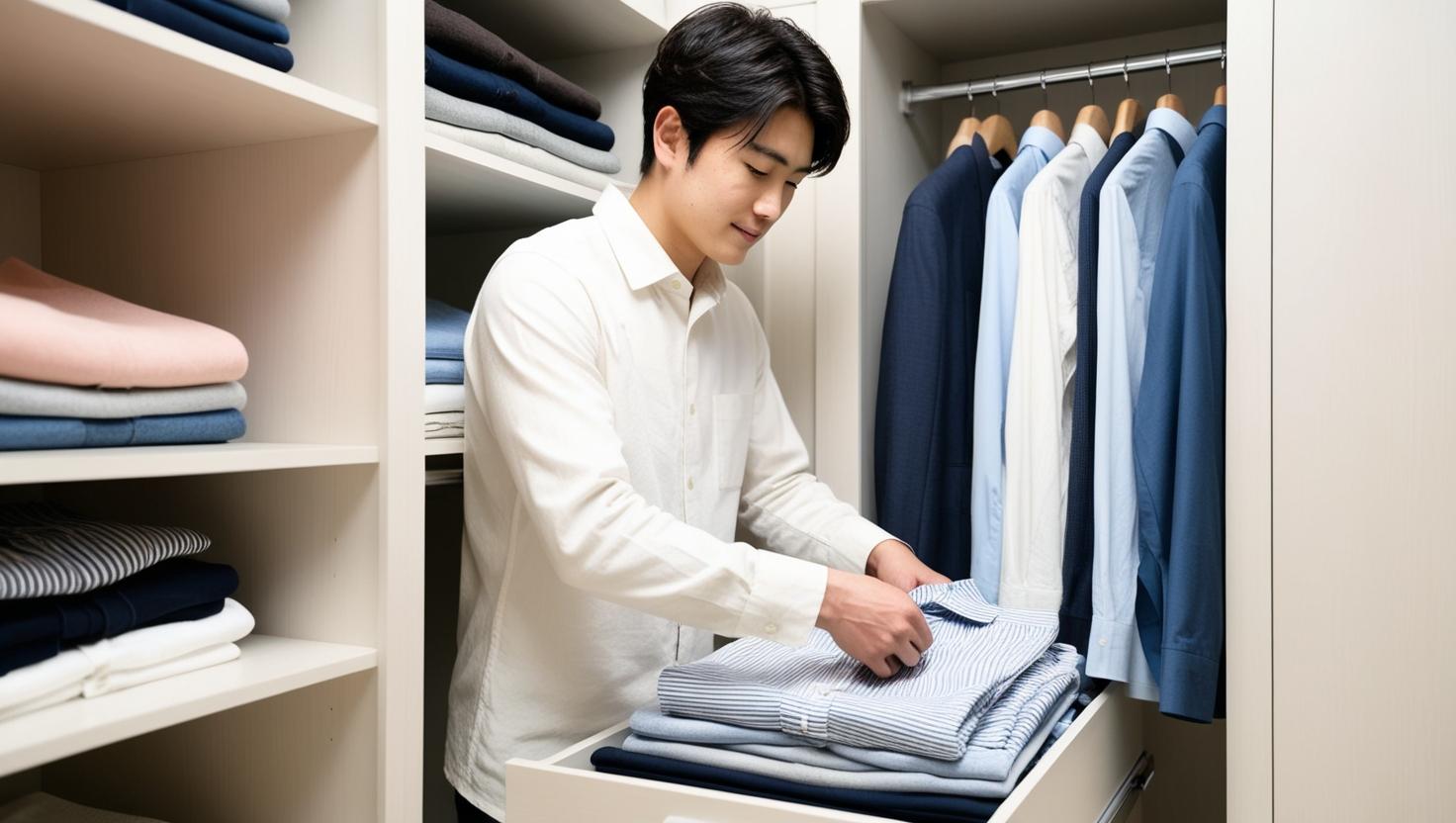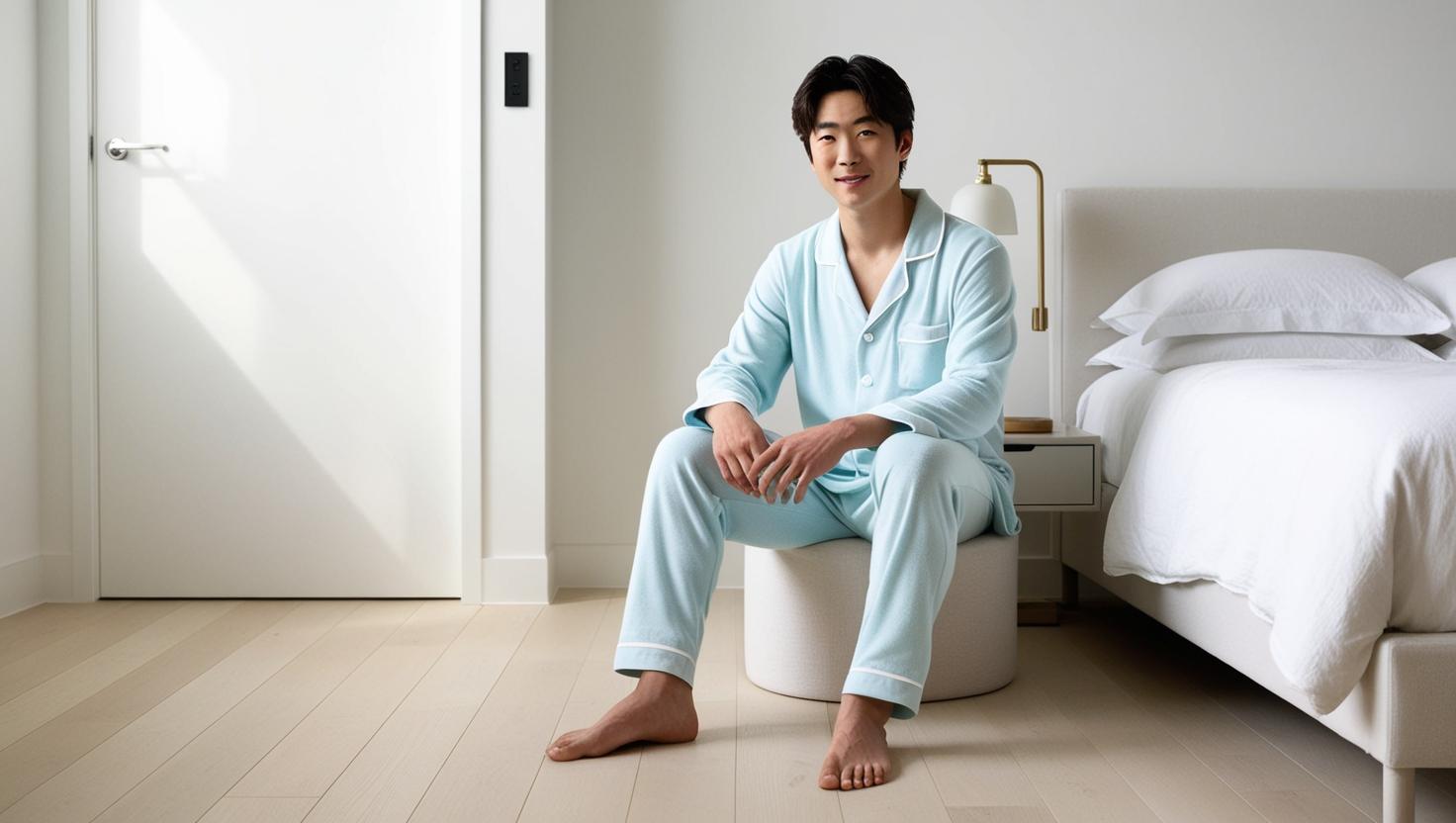In the contemporary fashion landscape, men’s dressing mistakes often go unnoticed, yet have a significant impact on self-image, professionalism, and social perception. This article will comprehensively review common dressing mistakes men make as an informative guide for men to improve their appearance.
The Importance of Dressing Neatly and Appropriately

Dressing well and appropriately is not just a matter of aesthetics; it is a reflection of discipline, respect for oneself and others, and an understanding of social context. In the professional world, good appearance is often associated with competence and credibility. Well-dressed individuals tend to be perceived as more intelligent, more trustworthy, and more successful.
On the other hand, men’s dressing mistakes can send the wrong signals, such as lack of attention to detail, unprofessionalism, or even indifference. Therefore, understanding and avoiding common men’s dressing mistakes is important for every man who wants to look his best on every occasion.
Fatal Mistakes in Choosing Clothing Sizes
One of the most basic and often overlooked mistakes men make when dressing is choosing the wrong size of clothing. Whether too big or too small, the wrong size can ruin the whole look, even on the best brand and quality clothes.
Oversized clothing, such as baggy shirts, jackets, or pants, can make the wearer look unkempt, sloppy, and even shorter than they actually are. Proportion is key when it comes to dressing. Shirts with shoulders that fall too far from the original shoulder, sleeves that cover the hands, or pants that are too long and bunch up over the shoes are all indicators of oversized clothing. As a result, the body's silhouette is lost, and the appearance becomes unstructured.
On the other hand, clothes that are too tight are also a serious mistake for men in dressing. Pants that are too tight to the point of restricting movement, shirts that are pulled at the buttons, or jackets that are tight in the chest and arms will create an uncomfortable, disproportionate, and even tacky impression. Clothes should provide comfort and freedom of movement without looking baggy or tight. Clothes that are too small can also highlight body parts that you may not want to highlight, such as skin folds or less than ideal body shape.
The solution to this size problem is tailoring. Off-the-rack suits, pants, and even shirts can be slightly altered to fit the body perfectly. Small adjustments to sleeve length, waistline, or pant leg width can make a big difference in the overall look. It’s a well-worth the investment to look more polished and professional and avoid common men’s dressing mistakes.
Mistakes in Color and Pattern Coordination
Understanding color and pattern coordination is a crucial aspect of dressing. Men's mistakes in dressing in this area can make their appearance look messy, mismatched, or even too flashy.
Many men are unfamiliar with the concept of the color wheel and how colors can complement or clash. Wearing colors that contrast sharply without harmony, or conversely, wearing too much of the same color and looking monotone, are common dressing mistakes for men. Choosing the right colors for your skin and the occasion is key.
While mixing patterns can be a sign of style sophistication, combining too many patterns or clashing patterns is a big dressing mistake for men. Wearing a striped shirt with an oversized plaid tie and a houndstooth suit jacket together can create a look that is confusing and overwhelming. Limit the number of patterns and make sure there are different sizes and densities between them, or pair them with plain items to balance things out.
Also, ignoring the nuances of a color (warm or cool) can lead to mismatches. Pairing a warm brown with a cool gray, for example, without a good understanding, can look disharmonious. Neutrals like black, white, gray, and navy are a safe base on which to build most outfits, and men should have a basic understanding of how these colors interact with each other.
Mistakes in Choosing Clothes Based on the Event (Dress Code)
One of the most important aspects of dress etiquette is understanding the appropriate dress code for different occasions. Men's mistakes in dressing in this area can make someone look rude, unprepared, or even silly.
Many men fail to differentiate between formal, semi-formal, and casual attire. Wearing jeans to a formal wedding, or a full suit to a casual barbecue, are examples of common male dressing mistakes.
In addition to the explicit dress code, it is also important to pay attention to the nuances of the event. A business meeting at the office with an important client may require a suit and tie, while an internal team meeting may be sufficient with a shirt and chinos. Men's dress mistakes in assessing the level of formality of an event can have a negative impact on the perception of one's professionalism.
Environmental and climate factors are also often overlooked. Wearing a thick wool suit in a hot tropical climate will cause discomfort and look impractical. Conversely, wearing clothes that are too thin in cold weather is also inappropriate. Choosing clothing materials that are appropriate for temperature and weather conditions is an important consideration to avoid mistakes in dressing.
Errors in Accessories and Details
Accessories and small details can make or break an outfit. Many men tend to overlook these aspects or use them inappropriately, leading to men’s dressing mistakes.
Ties are an essential accessory in formal wear, but they are often chosen incorrectly. Incorrect tie length (too short or too long), a tie width that is disproportionate to the shirt collar and suit lapel, or mismatched tie patterns and colors are common dressing mistakes for men.
The basic rule in men's fashion is that the belt should match the shoes, especially in color and leather type. Wearing a black leather belt with brown leather shoes, for example, is a common fatal dressing mistake for men. Also, the condition of the belt and shoes is important; dirty, worn, or unpolished shoes can ruin the overall look.
While jewelry can add a personal touch, wearing too much or too little can look tacky. Too many rings, a statement necklace under a dress shirt, or a watch that is disproportionate to the size of your wrist are all examples of men’s wardrobe mistakes. The principle of “less is more” often applies to men’s jewelry.
Socks are often an overlooked detail, but they can make a big impact. Wearing white socks with a business suit, or athletic socks with dress shoes, are common wardrobe mistakes. The general rule is that socks should match the color of your pants or shoes, and be long enough not to show skin when sitting.
Mistakes in Cleanliness and Clothing Care
Even the most expensive clothes will not look good if they are not properly cared for. Cleanliness and care of clothes are the foundation of a good appearance and can prevent men from making mistakes in dressing.
Wearing wrinkled or unironed clothing is an indicator of indifference and can damage the impression of professionalism. An untidy shirt, pants, or jacket will detract from the credibility of your appearance. Investing in a good iron is essential.
Clothes with visible stains, missing buttons, or loose stitching will quickly degrade the appearance. It is important to regularly inspect clothing for damage and treat stains promptly.
Personal hygiene is also closely related to appearance. Bad body odor or musty-smelling clothing can create a strong negative impression, even if the clothing itself looks neat. The use of deodorant, perfume in moderation, and regular washing of clothes are a must.
As mentioned, choosing materials that are not suitable for the weather can cause discomfort and excessive sweating, which can cause unpleasant odors or sweat stains on clothes. This is also a mistake for men in dressing.
Other Mistakes Men Make in Dressing
Outside of the main categories, there are a few other common men's clothing mistakes worth noting.
While wearing designer clothing can be a source of pride, too many logos or prominent branding can make an outfit look tacky and lack class. Elegant style often emphasizes simplicity and quality of materials over brand name.
A person’s appearance is not just about their clothes. An unkempt haircut and beard can ruin the whole impression, even if the clothes are perfect. Regularly trimming and grooming your hair and beard is an important part of men’s grooming.
In addition to color and care issues, choosing the wrong type of shoe is also common. Wearing sneakers with a business suit, or shiny leather shoes for casual occasions, are common mistakes men make when dressing. It is important to have a variety of shoes for different occasions and to understand when to wear each type of shoe.
Even with the best-fitting clothes, bad posture can ruin your look. Standing hunched over or walking sluggishly can make clothes look ill-fitting and unflattering. Practicing good posture will boost your confidence and make your clothes look better.
Following fashion trends is a good thing, but being too fixated on trends without understanding their relevance to your personal style and body shape can backfire. Some trends may not suit everyone. It is important to understand the basics of classic style and then integrate trends wisely, so as not to fall into the trap of men's dressing mistakes.
Conclusion
Men’s wardrobe mistakes are not trivial; they have far-reaching implications on how a person is perceived in various aspects of life, both personal and professional. From crucial sizing choices, harmonious color and pattern coordination, proper understanding of dress codes, to judicious use of accessories, every detail plays a vital role in shaping the overall image.
It is important to pay attention to detail, fit, and quality when dressing. Investing time and effort in understanding dress etiquette and caring for your clothes is an investment in yourself. By avoiding the common dressing mistakes men make, any man can significantly improve his appearance, exude confidence, and leave a positive impression in every interaction. Dressing is not just about covering up, it is about expressing yourself and respecting the social environment.
















